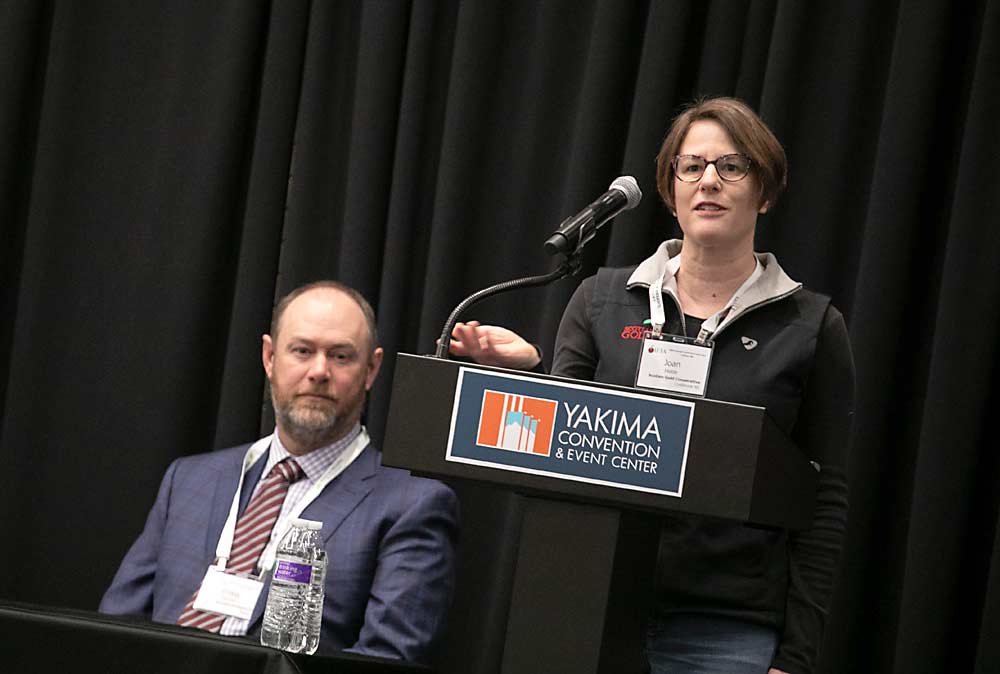
From one side of North America to the other, the International Fruit Tree Association gathered in Yakima, Washington, on Feb. 11 for a week of research talks, technology workshops and orchard tours in unseasonably warm, spring-like weather.
On Feb. 12, the conference sessions focused on climate impacts and adaption to orchard systems. The recent cold damage event in British Columbia in January provides an unfortunate example of how a general warming trend combined with weather extremes can put orchards at risk.
“An increase in summer heat has really helped the grape industry, and we’ve seen a decrease in winter minimums that has allowed an expansion of cherries and wine grapes into new territory,” said Denise Neilsen, a retired scientist with Agriculture and Agri-Food Canada, based in Summerland, whose expertise is in irrigation.
There had not been a cold event that would damage those expanding crops in the past 30 years. Until recently.
“Climate models can only project, they cannot predict,” because there is so much weather variability from year to year, Neilsen said.
Washington State University scientists shared research updates on climate mitigation projects, including heat stress sensors to automate cooling systems, emerging tools for fire blight control and sprayable frost protection products.
Washington State University tree fruit physiologist Matt Whiting shared an update on the frost protection product — a substance derived from wood pulp, which he calls cellulose nanofibril — that has recently been licensed to Sappi, a global wood-pulp products company.
“It creates an insulating layer around the buds,” Whiting said. His trials show that this coating shifts the lethal temperature curve of the developing buds by several degrees.
Afternoon sessions focused on crop nutrition and precision crop load management.
The takeaway from the nutrient management session: If some is good, more is not better. For one, the price of nitrogen fertilizers is far higher than earlier in his career, said retired Agriculture and Agri-Food Canada scientist Gerry Neilsen, prompting a more conservative approach.
“No one likes wasting money, right?” he said. But he shared data from trials over the years showing that too much nitrogen also reduces color development in apples and fruit size in cherries.
Then, Lailiang Cheng, a Cornell University tree fruit physiologist, shared Honeycrisp-specific nutrient data that further supported the theory of sticking to the sweet spot.
“Honeycrisp trees are very sensitive to nitrogen,” he said. Higher nitrogen applications lead to bitter pit, but too low, and return bloom suffers. He recommends a sweet spot around 35 to 40 pounds per acre — based on fertigation trials with potted trees in sand culture.
The conference continues with orchard tours Feb. 13 and more horticultural research on Feb. 14 at the Yakima Convention Center.
—by Kate Prengaman






Leave A Comment